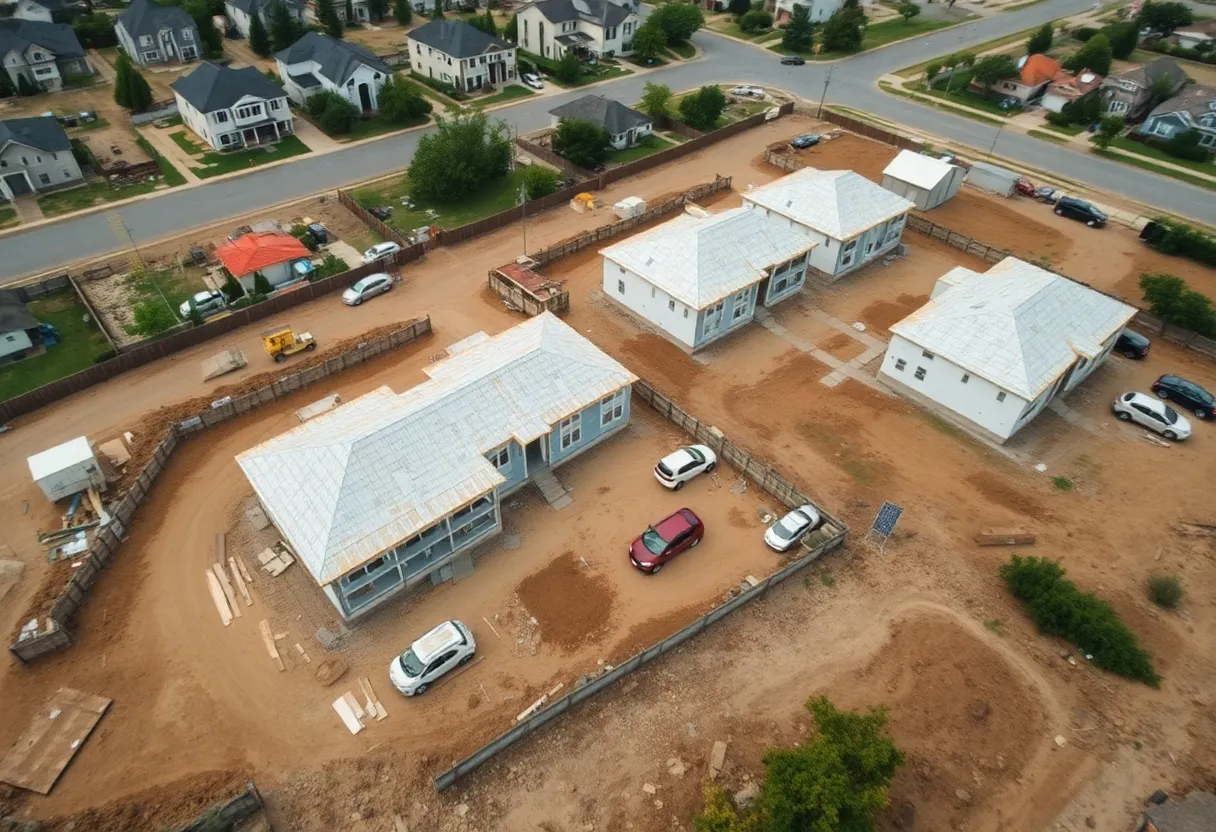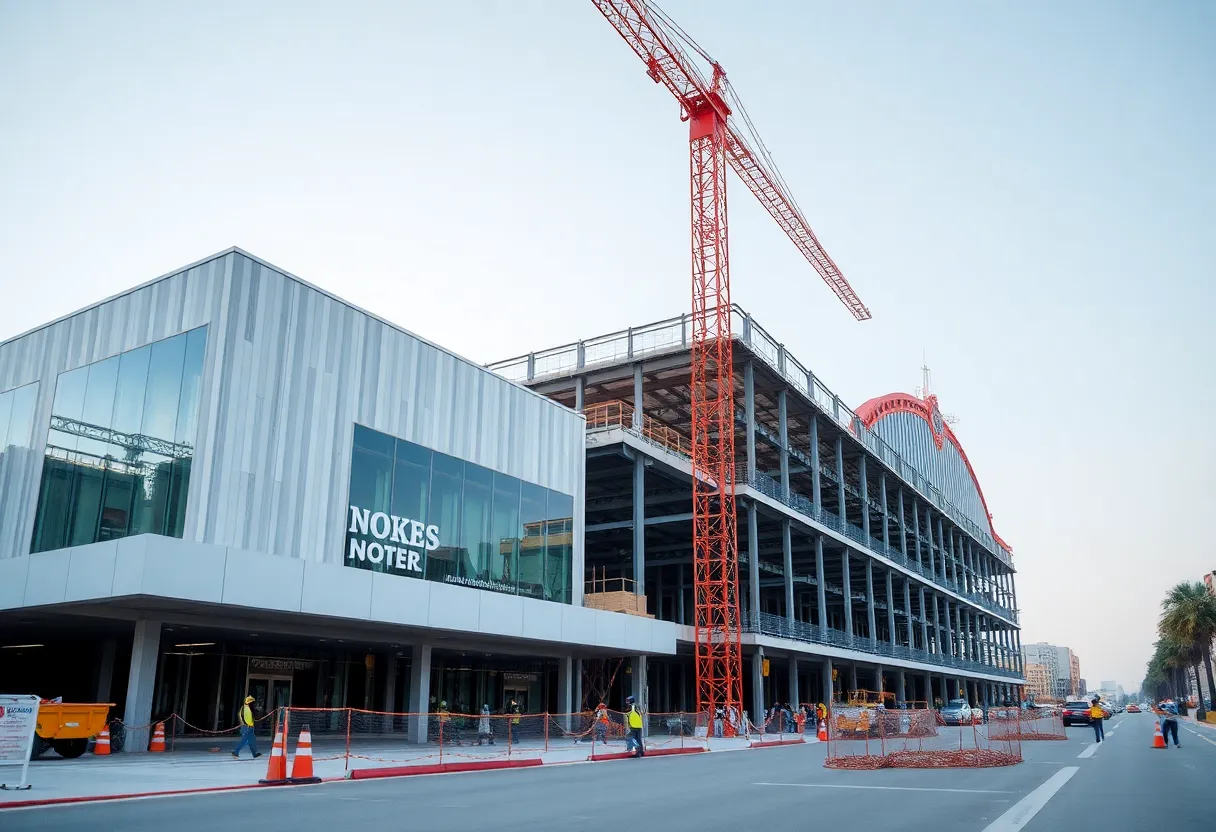News Summary
Single-family homebuilding in the U.S. has fallen to its lowest level in 11 months due to high mortgage rates and economic uncertainty. Housing starts decreased by 4.6%, leading to a total of 883,000 units, amid a decline in permits and builder sentiment. While multi-family housing is on the rise, challenges persist in the single-family sector, with an anticipated 11% drop in constructions this year and increasing completion times reflecting a slowdown in demand.
U.S. Single-Family Homebuilding Declines to 11-Month Low amid Economic Uncertainty
In June 2025, single-family homebuilding in the United States fell to its lowest level in 11 months, reflecting the challenges posed by high mortgage rates and ongoing economic uncertainty. As home purchases are impacted, the overall landscape of residential investment shows signs of contraction, particularly during the second quarter of the year.
Decline in Construction Activity
According to data from the Commerce Department, single-family housing starts decreased by 4.6%, bringing the annual rate down to 883,000 units. This marks the lowest rate observed since July 2024, demonstrating the struggles faced by builders across all four U.S. regions, with the West and South seeing particularly significant declines.
Additionally, permits for future construction of single-family homes fell to a rate of 866,000 units, down 3.7% and marking the lowest issuance since March 2023. This decrease in permits, coupled with increased home supply, has discouraged builders from initiating new housing projects.
Challenges in the Housing Market
The housing market, while only a small share of the overall gross domestic product, generates a notable economic ripple effect through related purchases such as furniture and appliances. There are growing concerns that the persistent weakness in the housing sector could have a negative impact on the broader economy.
Economists emphasize the need for lower borrowing costs to revive the housing market, yet face hurdles due to inflationary tariffs imposed by the current administration. Furthermore, recent immigration policies have contributed to a labor shortage in the construction industry, adding another layer of complexity to the situation.
Trends in Demand and Supply
Builder sentiment appears to be shifting, as surveys indicate that an increasing number of builders are cutting home prices to attract potential buyers amid dwindling sales. Meanwhile, the housing inventory has dwindled to levels comparable to those seen in late 2007, creating an environment of hesitance for new construction.
Multi-family housing projects have shown a contrasting trend, with a 30.6% increase in constructions, totaling 414,000 units in June. Overall housing starts, which include multi-family units, witnessed a 4.6% rise to a total of 1.321 million units, surpassing economists’ forecasts of 1.3 million. Similarly, multi-family building permits also rose 8.1% to reach 478,000 units.
Future Prospects of the Housing Sector
Despite some increases in multi-family housing, the single-family sector is facing projected declines. According to estimates from financial analysts, there may be an 11% drop in single-family housing starts throughout this year, with expectations that around 910,000 units will be constructed.
The number of single-family homes approved for construction, but remaining unstarted, has stabilized at 148,000 units. On the other hand, completions of single-family homes plunged by 12.5% to 908,000 units, the lowest figure since January 2024. Furthermore, there has been a 0.3% drop in inventory for homes under construction, showing a continuing trend of reduced numbers.
The Bigger Picture
In local markets such as the D.C. metro area, the overall number of available properties has surged by 22.7% year-over-year. A decrease of 0.3% in pending home sales further signifies the slowdown in demand, with the average completion time for properties increasing from 26 days last year to 36 days as of June 2025.
As the housing market continues to grapple with these challenges, sellers in areas like D.C. are being forced to reassess their pricing strategies, reflecting the broader trends influenced by federal job cuts and layoffs, ultimately contributing to an ever-growing home supply and diminished demand.
Deeper Dive: News & Info About This Topic
Additional Resources
- The Mortgage Point: D.C. Housing Supply Experiences Historic Jump
- Kitsap Sun: Washington Housing Market June 2025 Report
- Redfin: Is Now a Good Time to Buy a House?
- Seattle Times: Seattle Area Home Prices Defy Gravity
- Forbes: Median Home Prices by State
- Wikipedia: Real Estate
- Google Search: Housing Market Trends
- Google Scholar: Housing Market Analysis
- Encyclopedia Britannica: Real Estate
- Google News: Housing Market 2025
Author: Construction FL News
FLORIDA STAFF WRITER The FLORIDA STAFF WRITER represents the experienced team at constructionflnews.com, your go-to source for actionable local news and information in Florida and beyond. Specializing in "news you can use," we cover essential topics like product reviews for personal and business needs, local business directories, politics, real estate trends, neighborhood insights, and state news affecting the area—with deep expertise drawn from years of dedicated reporting and strong community input, including local press releases and business updates. We deliver top reporting on high-value events such as the Florida Build Expo, major infrastructure projects, and advancements in construction technology showcases. Our coverage extends to key organizations like the Associated Builders and Contractors of Florida and the Florida Home Builders Association, plus leading businesses in construction and legal services that power the local economy such as CMiC Global and Shutts & Bowen LLP. As part of the broader network, including constructioncanews.com, constructionnynews.com, and constructiontxnews.com, we provide comprehensive, credible insights into the dynamic construction landscape across multiple states.





